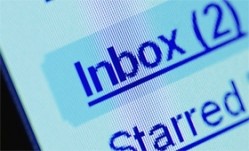Guide to online marketing: Make newsletters work for you

This newsletter can include business news, latest offers and promotions, or simply a reminder that your company still exists.
But although it is one of the easiest marketing techniques to implement at the push of a button, it is also one of the hardest to get right.
“It’s very much a challenge to get the newsletter sent at the right time, targeted at the right person and relevant to that person,” says Denise Cox, newsletter specialist at Newsweaver, who manage InterContinental Hotels' email marketing campaigns. “It’s a temptation to just press send because it’s a cost effective way to communicate, but in fact time should be spent in crafting the message and only sending it to the people that matter.”
How to target your customers
K West Hotel and Spa in West London sends an email out to its entire database on a quarterly basis, providing information on seasonal events and special deals at the hotel.
On the other hand, Von Essen, who currently operates 29 hotels across the UK, divides its database up into groups (i.e. corporate, leisure, food and beverage, spa, and luxury family), so they can make each newsletter as targeted and relevant as possible.
Lucy Graham, marketing manager at Von Essen says the group sends a targeted newsletter out every four to five weeks, often to different sections of the database.
“We have people on our database who have specifically asked to be kept up to date with certain things, but there are also occasions when we do send to our entire database, for instance an award announcement, or a new addition to the portfolio,” she said. “It’s all about making them timely and making the content relevant. Our particularly targeted emails are benefiting from open rates of around 54 per cent but obviously, the more people you send to, the lower your open rate is likely to be as the information becomes less targeted and more mass-market.”
Ensure your email is viewed
The best way to ensure your newsletter open rate stays as high as it can be, is to ensure your subject line, the first point of contact with your reader, is as eye-catching and intriguing as possible.
Businesses can do this by using their email marketing software to split test newsletters to try out different subject lines. Newsletters carrying two different subject lines will be sent out to a small percentage of the database, before the most popular version with the highest open rate is distributed to the remainder of addresses.
Engage your reader
Cox says the trick then is to further engage the reader by making the newsletter attractive and communicative without overstuffing it full of content.
“You should have your keywords in a sizzling subject line to pull your reader in, but then, once you have them, you only have a short space of time to make an impression and communicate the purpose of your newsletter.”
Whether you want your readers to book a hotel room or a table, or even print off a coupon to bring in next time they visit, your call to action, complete with a working link to the relevant website page, should be the clearest statement on the newsletter. This coupled with a dynamic design that looks great with or without images (as some email platforms may not display them), and a tone of voice appropriate to your market will help increase clickthroughs.
Pan-Asian restaurant chain Tampopo currently sends out a newsletter at the beginning of each month, delivering news and offers from the brand to its database of 35,000 customers.
Nick Jeffreys, co-founder and managing director of Tampopo, said the group’s newsletters were more about engaging and nurturing the restaurant-consumer relationship than simply marketing promotions.
“We want to come across as friendly, informal and inviting, and we want to give our customers more than just offers and promotions. The offers we give our members are more like thankyous for following us than promotional activities. We also tell our customers about local activities that are going on, for instance when the traditional Japanese Cherry Blossom Festival came to London we sent out information about it along with information about how we are supporting it.”
Constructing an email marketing campaign can be a long and tricky process to get right, but by monitoring and analysing the results, and adjusting different elements of a newsletter such as what time of day it is sent, businesses can ensure they end up with a polished campaign that can help improve your hotel's occupancy or your restaurant's covers.
Top tips for getting the most from email marketing:
Timely and relevant: Send your campaigns at the right time of day, and just before the offer you are promoting starts. Customers may forget about it if you send your newsletter out too far in advance. Split your database up into groups, e.g. locations, so you can make your newsletter seem more personal.
Catch their attention: An attractive newsletter full of vibrant images is certainly eye-catching but can be detrimental if email platforms can’t support it. Create a template that uses a balance of text and images that you can adapt and resend over and over again.
Call to action: Have a clear idea of what it is exactly you want your audience to do with your newsletter and communicate that clearly.
Easy on the frequency: Don’t bombard your customers with emails. You may end up being a pest in their inbox that will likely get you deleted from their address book permanently.
Monitor, analyse, adapt: Always check back on how your newsletter has performed and slowly adjust any variables to get the best reaction possible.
You can find all our articles on online marketing here





















